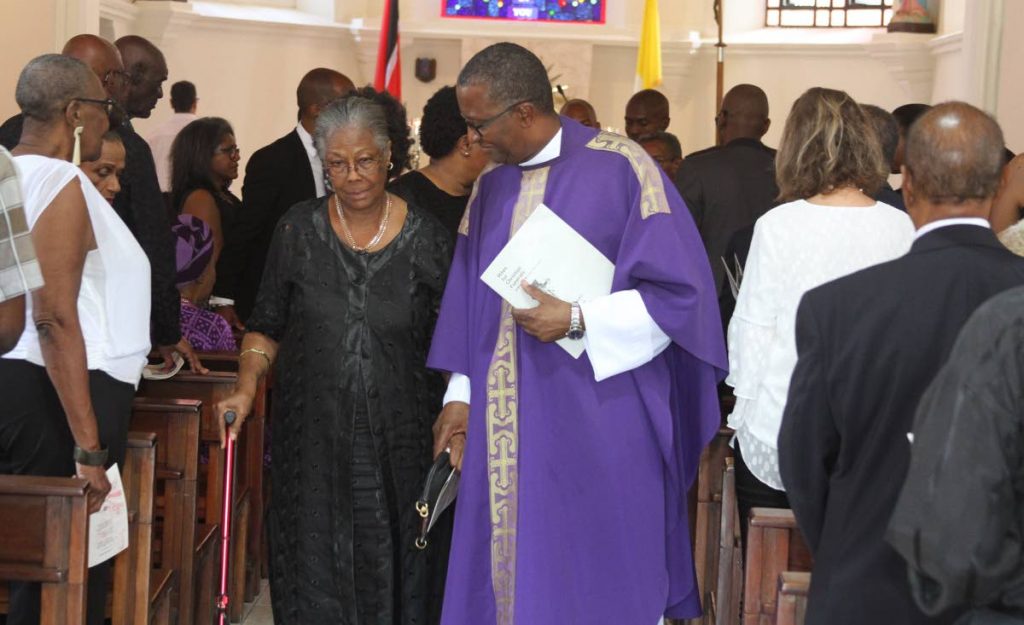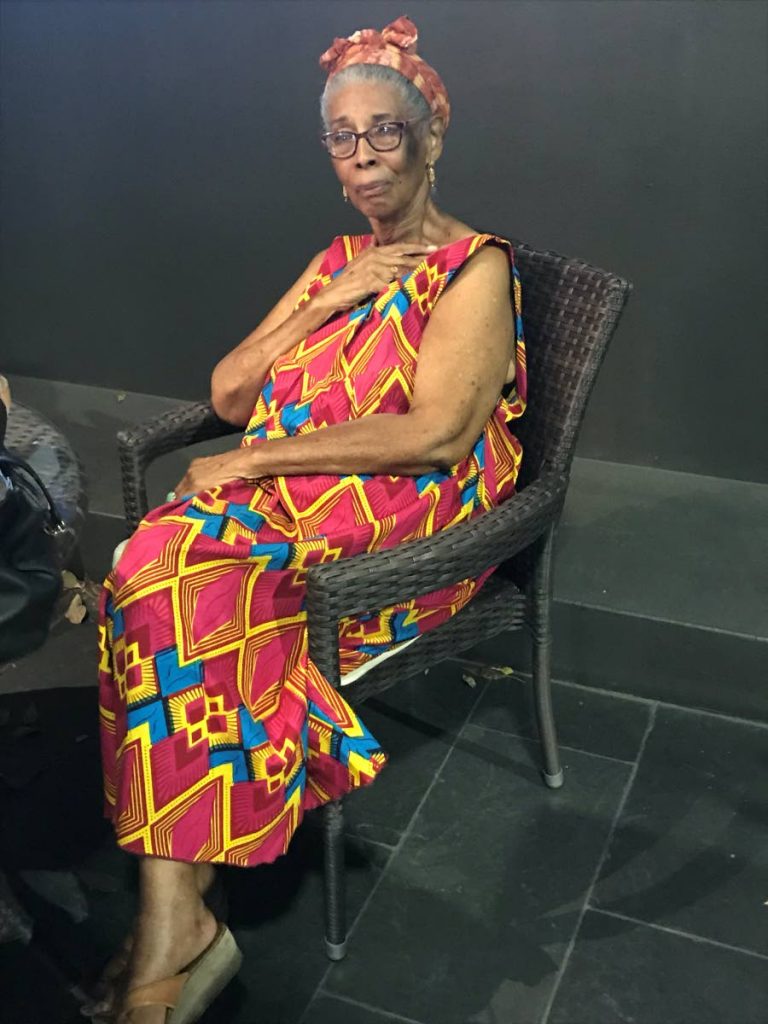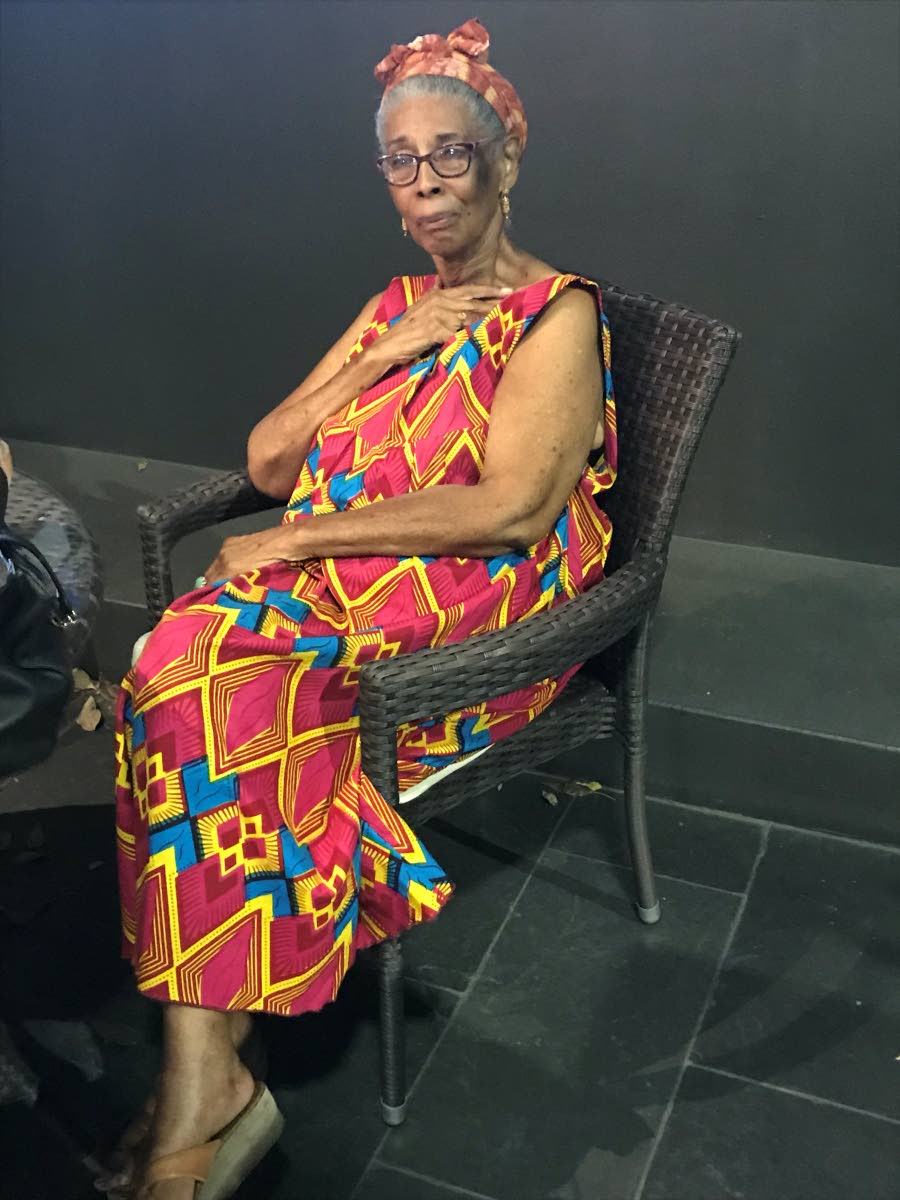Designers hail Althea Bastien game-changer in batik art

Passion, discipline, and an insistence on high quality made batik artist Althea Bastien one of the great designers in TT history, and helped shape the country’s fashion industry.
Born on August 26, 1933, Bastien, who was also a noted horticulturist, died at her St Ann’s home on March 4, 2020.
Speaking of her work, painter, Ken Crichlow said, “It is in Althea Bastien’s doing we have come to know something about dyeing fabric as art. Indeed, it is in her themes, and techniques of batik design, in her use of colour, texture, and motif we came to think about a Trinidad aesthetic in fabric. We have used her fabric designs in a particular way to think about the look and feel of excellent material and discover a way of celebrating heritage as an insight to elegance and sophistication.”
Clothing designer Claudia Pegus said she knew Bastien socially for several years through the industry, and had the greatest respect and admiration for her as a superior artist. She said she was very saddened by Bastien’s passing even though she knew Bastien had not been well for several years.
Clothing designer Robert Young said he did not know Bastien personally but knew her work although he could not afford it at the height of her popularity. He said her work was important and that significant people in TT wore it frequently at that time.
“She showed that we could make things and colour fabric the way we want to see it.”
Her friend and first printing textile artist in TT, Greer Jones-Woodham said she was first exposed to Bastien and her work at the age of 16 when she went to one of Bastien’s exhibitions at the National Museum.
“She was an educator so she was teaching while doing this work. And I thought it was incredible, this body of work she did over one year, and to have a full-time job. It made me think of my own journey, that perhaps it was something that was doable.”

Jones-Woodham said she was always drawn to things made by hand so when she returned to TT after studying for her painting degree in New York, she wanted to do something creative that would sustain her so she went into textile painting. Bastien was one of her influences.
She said as a textile artist Bastien captured Caribbean light and created colour palettes with a Caribbean aesthetic that impacted the local fashion industry. She believed Bastien spearheaded the notion of working with TT culture and using symbols that people associated with the country.
She said Bastien’s idea of using symbolism in fabric was sparked by the fabric and block batiking produced in Ghana. She explained that Bastien’s sister, Jeanette Hayfron-Benjamin, lived in Ghana and Bastien would visit the African country.
“In Ghana the first set of symbols to hit the cloth were adinkra symbols. It was the language of the Ghanaian people and it had significant meaning so they put it on fabric and they wore it. I think, in a way, Althea identified with her own culture in TT yet was influenced by what was going on in Ghana. Those linkages embedded in her what she wanted to do.”
She added that Bastien was a horticulturist and would grow hibiscus, and that passion extended to her patterns. “I used to go by her to visit and every time she would just talk about these beautiful hibiscus that she would grow. She had an eye to beauty and when you went to her house you would see her passion.”
Jones-Woodham said Bastien was very strict and a perfectionist, which was a good trait for batiking, a labourious process which led to good pieces being treated like gold.
“She had a special hand. She was disciplined. She spent her whole life doing that. She loved it and she never gave it up. I picked up a lot just from being around her. I taught block batik in government training programmes but I didn’t have that kind of hand.”
She said Bastien was influential in the way the local fashion industry developed, including her own work, how she looked at patterns and how they were arranged on fabric in order to show who the people of TT were.
Production designer Richard Young worked a lot with Bastien in the 1980s.
He described Bastien as a colourist and an artist who crafted memorable imagery in her textile design.
In addition to her skill and creativity, he said her popularity was also a result of interest in local design talent as well as Afro-Caribbean identity at the time. He believed it was in response to the “black is beautiful” movement all over the world as well as the local black power movement.
“Her work was a celebration of the Afro-Caribbean perspective with respect to our fashion identity. A result of these movements was a lot more people were investing in making an Afro-Caribbean identity for themselves. I think she would have been part of that because batik by itself has a very African continental and Indo sub-continental roots.”
He said the types of fabric used, natural fibres such as silks, cotton, linens and other “breathing fabrics,” were a deliberate choice which created a tropical resort brand. But in addition to clothing her work was used as murals and cloth home decor furnishings like pillows, centrepieces and table mats.
Young said he saw her as a pioneer who was impeccably trained, disciplined, and meticulous.
He said when he approached her to do a show, he had to choose his design concept carefully because she was only interested in the highest quality. He said to capture her interest things needed to have a story, to have a purpose, and make sense from a merchandising aspect.
“Some people may not have been able to deal well with her but she was very cooperative when you had your agenda and your focus.”
He added that she stayed on the periphery and did not like to be centre stage, but her impact on the development of the local fashion industry is legendary.
Even at her funeral, at St Ann’s RC Church, St Ann’s, last Thursday, Bastien was celebrated as a game-changer in the art of batik design in TT and as someone devoted to helping others.
“She believed in others, she believed in the future, she was able to embrace and settle in her career that took her to the end,” said Fr Gregory Augustine.
“Althea was a very special person with many aspects to her personality,” Elliot Bastien – her youngest brother – said in her eulogy. He said his sister left a mark as a batik artist “and whatever aspect we choose to remember her by, it will always be a special memory.
“Though our recollections may go down different lanes they will all converge in the sure and certain knowledge that indeed hers was a life well lived.”
Bastien was remembered as a devoted Catholic and a woman who believed in the free development of children.
– with reporting by Elizabeth Gonzales



Comments
"Designers hail Althea Bastien game-changer in batik art"